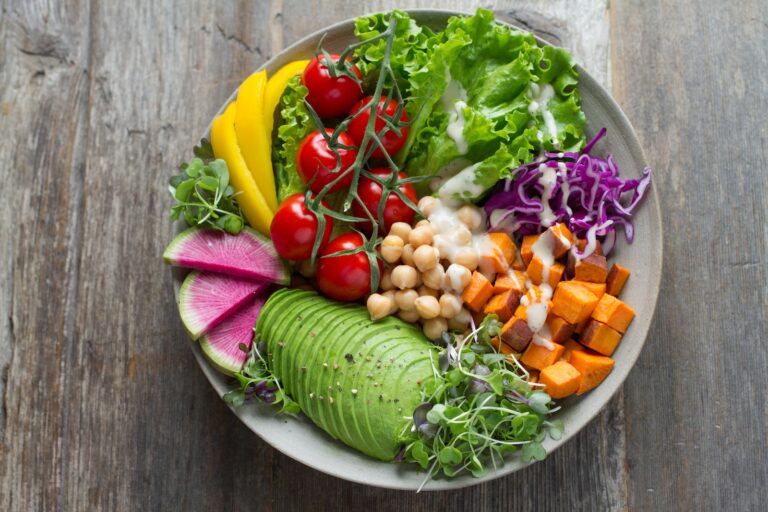Understanding Food Sensitivities and Allergies
Do you ever feel bloated or uncomfortable after eating certain foods? Perhaps you break out in hives or experience an upset stomach. If so, then you may be one of the millions of people who suffer from food sensitivities or allergies. These conditions can significantly impact your health and wellbeing, but understanding their causes and effects is not always straightforward.
In this blog post, we’ll delve into the world of food sensitivities and allergies to help you better understand what they are, how they develop, and what steps you can take to manage them effectively. Get ready to explore a fascinating topic that affects us all!
What is Food Sensitivity?

Food sensitivities and allergies are two terms that are often used interchangeably, but they represent two very different conditions. Food sensitivity is a condition in which the body over-reacts to certain foods. Allergies are an immune response to specific foods.
An estimated 10%-25% of the population suffers from some form of food sensitivity or allergy, though the percentage may be higher for particular groups of people, like children and pregnant women. Symptoms can include skin rashes, diarrhea, vomiting, respiratory problems, and even anaphylactic shock (a life-threatening reaction).
The cause of food sensitivities is unknown, but research suggests that it may be related to genes and environmental factors like pesticides or other toxins. Treatment generally involves avoiding the allergen (the offending food) and managing symptoms with medications or dietary restrictions. If the food sensitivity is severe enough, it may require monitoring by a physician or elimination dietitian.
How Many People are Affected by Food Sensitivities?
There is no one answer to this question as food sensitivities can vary from person to person, and even from day to day within the same individual. However, a general estimate is that about 18-30% of the population are affected by food sensitivities in some way (1). This means that almost one in five people have an allergic response to at least one type of food.
Some people who are affected by food sensitivities may only experience minor problems, such as minor stomach pain or headaches after eating certain foods. Other people may experience more serious symptoms, such as asthma triggered by exposure to specific foods or anaphylactic shock caused by a severe reaction to a particular food allergen.
Food sensitivities can affect individuals of any age, but are most commonly seen in young children and adults aged between 18 and 40 years old. Interestingly, it appears that women are more likely than men to be affected by food allergies or sensitivities (2). However, this appears to be primarily because women generally eat more traditional allergy-triggering diets (such as dairy products) than men do.
Food Allergies vs. Food Sensitivities
Food sensitivities and allergies are two separate conditions that can be caused by the same food. Allergies are characterized by an immune response to specific foods, while food sensitivities are simply a negative reaction to foods. People with food sensitivities may experience symptoms after eating even small amounts of the offending food. Food allergies, on the other hand, occur when the body’s immune system attacks tissues in the digestive tract after eating certain foods. Symptoms of a food allergy can range from mild discomfort to life-threatening reactions.
There is no single cause for food sensitivities or allergies, but they may be linked to genetics, lifestyle choices, and environmental factors. Some people are naturally more sensitive to certain ingredients than others, while others may have an allergic response to particular foods despite having no prior history of allergies.
There is no way to determine if you have a sensitivity or an allergy unless you try a food containing the allergen or antigen that causes your symptoms. If you think you might have a sensitivity or allergy to a particular food, it is important to talk to your doctor about it. He or she can help determine if you have a true food sensitivity or if your symptoms are instead related to another condition.
Symptoms of Food Sensitivities (And Their Meaning)
Food sensitivities are increasing in prevalence, and while some may simply refer to them as “food allergies,” food sensitivities encompass a wider range of reactions that can impact overall health. Food allergies are an extreme form of food sensitivity, where the body reacts to specific proteins found in foods. However, food sensitivities can occur with any type of food, and they can cause a wide array of symptoms.
The most common symptoms of food sensitivities include:
- Difficulty digesting certain foods.
- Constant stomachaches or diarrhea after ingesting certain foods.
- Hay fever-like symptoms after being exposed to certain types of pollen.
- Fatigue after eating certain types of foods.
- Headache, dizziness, and other general symptoms after eating certain types of food.
How to Introduce Different Foods into Your Diet Safely
Food sensitivities and allergies can be really frustrating, because you never know when you’re going to have an adverse reaction. The best way to avoid these problems is by learning about food sensitivities and allergies and understanding how they work.
Food sensitivities are temporary reactions your body has to certain foods. These reactions can range from mild symptoms, such as a headache or an upset stomach, to intense reactions, such as hives or anaphylaxis.
Most food intolerances are not related to food sensitivities. An intolerance is a bigger problem than a sensitivity, because it means your body cannot process food properly. You may have trouble digesting certain foods, experiencing bloating or gas after eating them, or experiencing other unpleasant side effects.
If you suspect you may have a food sensitivity or allergy, it’s important to talk to your doctor. He or she can test for sensitivity and allergies and create a personalized plan for managing them.
Recipes for People with Food sensitivities or allergies
Everyone has their own unique set of food sensitivities and allergies. Not all food allergies are the same. Some people have a true allergy to a certain ingredient, while others may have a food sensitivity, which means their body reacts to the ingredient but does not actually produce an allergic response. Food sensitivities can be caused by pesticides, preservatives, mold, yeast or other chemicals in food.
If you’re wondering what foods might be triggering your own food sensitivities or allergies, here are some recipes that may be beneficial for you to try:
1) Roasted Veggies and Legumes: A fantastic dish that is great for people with gluten and dairy allergies as well as those who are intolerant to nuts and soy is roasted vegetables and legumes. Simply roast your favorite veggies (e.g., butternut squash, sweet potatoes, carrots) or beans (e.g., pinto beans, black beans, chickpeas) until they are soft and slightly charred on the outside but still firm inside. You could also add in spices such as cumin or chili powder to give it that extra flavor boost!
2) Quinoa Bowls with Tahini Dressing: Another great dish that is perfect for those with gluten-free restrictions or those intolerant to soy is quinoa bowls topped with a tahini dressing made from olive oil, garlic, lemon juice and salt. This dish is packed full of protein and healthy fats which will keep you feeling energized all afternoon long.
3) Asparagus and Grapefruit Salad: A light and refreshing salad that is perfect for warmer weather is asparagus and grapefruit salad. First, trim the asparagus spears into short, bite-sized pieces then toss them in a bowl with olive oil and lemon juice. Next, gently halve and slice the grapefruit then add it to the salad mix. Finally, sprinkle some chopped pistachios on top for a delicious finishing touch!
4) Spicy Black Bean Bowls with Avocado Dressing: If you’re looking for a hearty and filling meal but want something that is also dairy free and gluten free, try out spicy black bean bowls with avocado dressing. The avocado dressing will provide ample healthy fats to keep you full while the black beans will give the dish a hearty southwestern flavor.
5) Veggie Bowls with Tahini Dressing: Another great option if you’re looking for vegan-friendly food is vegetable bowls with tahini dressing. Tahini dressing is made from sesame seeds, lemon juice, garlic and salt and can be made in just minutes flat. It’s a tasty and Healthy alternative to traditional salad dressings and can be used on a variety of different vegetables, including leafy greens, fruits, and even grains.
Conclusion
Food sensitivities and allergies are becoming more common, which is no surprise given the amount of different food products that we are exposed to on a daily basis. I hope this article has provided you with some understanding of what food sensitivities and allergies are, as well as some tips on how to manage them. If you have any questions or would like help managing your sensitivities or allergies, please do not hesitate to contact us.







3 Comments